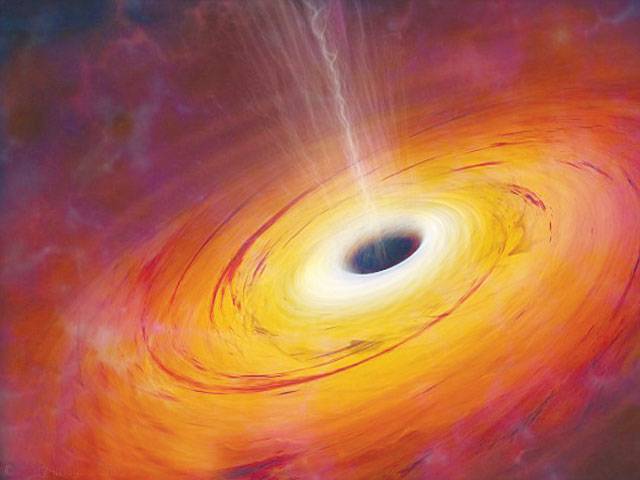Daily Mail
Washington
A new theory suggests that black holes might die by transforming into a ‘white hole,’ which theoretically behave in the exact opposite manner as a black hole - rather than sucking all matter in, a ‘white hole’ spews it out.
The theory, as first reported by Nature.com, is based on the speculative quantum theory of gravity. Scientists believe it may help determine the great debate over black holes about whether they destroy the things they consume.
According to the theory, a ‘white hole’ would explosively expel all the material consumed by a black hole. Nature.com explains the new theory as suggesting ‘that the transition from black hole to white hole would take place right after the initial formation of the black hole, but because gravity dilates time, outside observers would see the black hole lasting billions or trillions of years or more, depending on its size. If the authors are correct, tiny black holes that formed during the very early history of the Universe would now be ready to pop off like firecrackers and might be detected as high-energy cosmic rays or other radiation.’
According to Albert Einstein’s theory of relativity, when a dying star collapses it will often come to a point where the collapse is irreversible - at which point, it becomes a black hole, sucking in light and anything else in its cosmic vicinity.
It’s long been suspected that gigantic black holes lurking in the heart of galaxies rotate faster and grow larger as they feast on gas, dust, stars and matter. But there hasn’t been a reliable measurement of the spin rate of a black hole until last year. While black holes are difficult to detect, the region around them gives off telltale X-rays.
Using NASA’s newly launched NuStar telescope and the European Space Agency’s workhorse XMM-Newton, an international team observed high-energy X-rays released by a supermassive black hole in the middle of a nearby galaxy. They calculated its spin at close to the speed of light - 670 million mph.
It was the first ‘unambiguous measurement of the spin rate’ of a supermassive black hole, University of Maryland astronomer Christopher Reynolds, who had no role in the research, wrote in an accompanying editorial.
Behemoth black holes - with masses millions to billions times that of the sun - are thought to reside in every galactic center. They’re extremely dense and possess such powerful gravitational tug that not even light can escape.
Friday, April 19, 2024
Black holes become white holes at end

Caption: Black holes become white holes at end
Opposition objects to oath-taking of MNAs amid lawlessness
5:15 PM | April 19, 2024
Electioneering to end on Friday night ahead of by-polls in 21 constituencies
5:14 PM | April 19, 2024
Fawad Chaudhry granted bail in 14 cases related to May 9 violence
5:13 PM | April 19, 2024
British Army chief lauds Pakistan Army's professionalism, expertise
5:12 PM | April 19, 2024
Israeli aircraft fire missiles at Air Force assets in Iran: Report
3:52 PM | April 19, 2024
A Tense Neighbourhood
April 19, 2024
Dubai Underwater
April 19, 2024
X Debate Continues
April 19, 2024
Hepatitis Challenge
April 18, 2024
IMF Predictions
April 18, 2024
Kite tragedy
April 19, 2024
Discipline dilemma
April 19, 2024
Urgent plea
April 19, 2024
Justice denied
April 18, 2024
AI dilemmas unveiled
April 18, 2024
ePaper - Nawaiwaqt
Advertisement
Nawaiwaqt Group | Copyright © 2024





